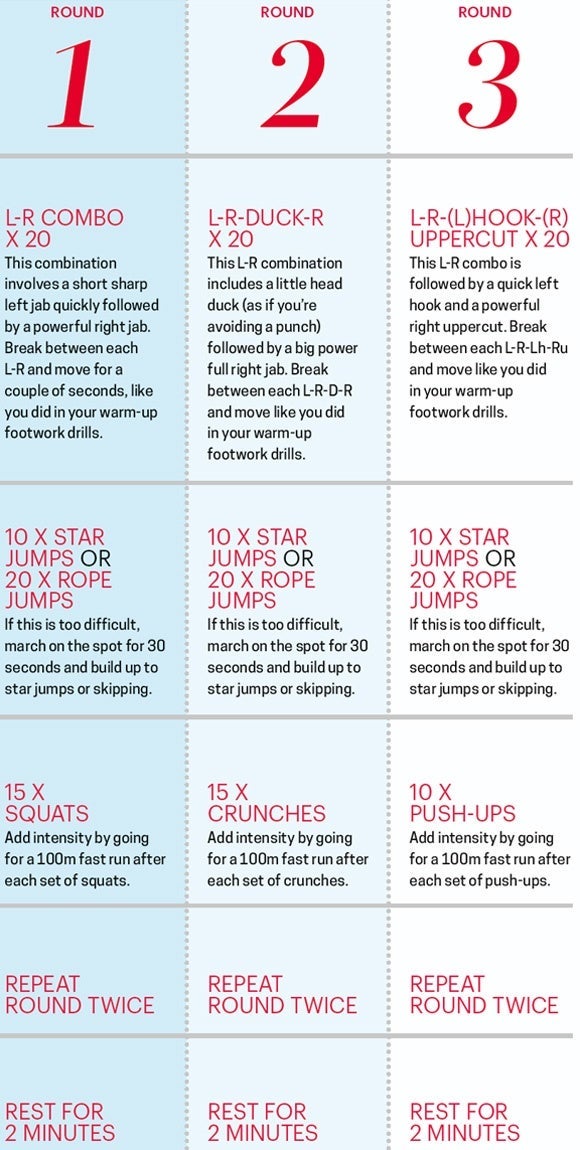Boxing workout
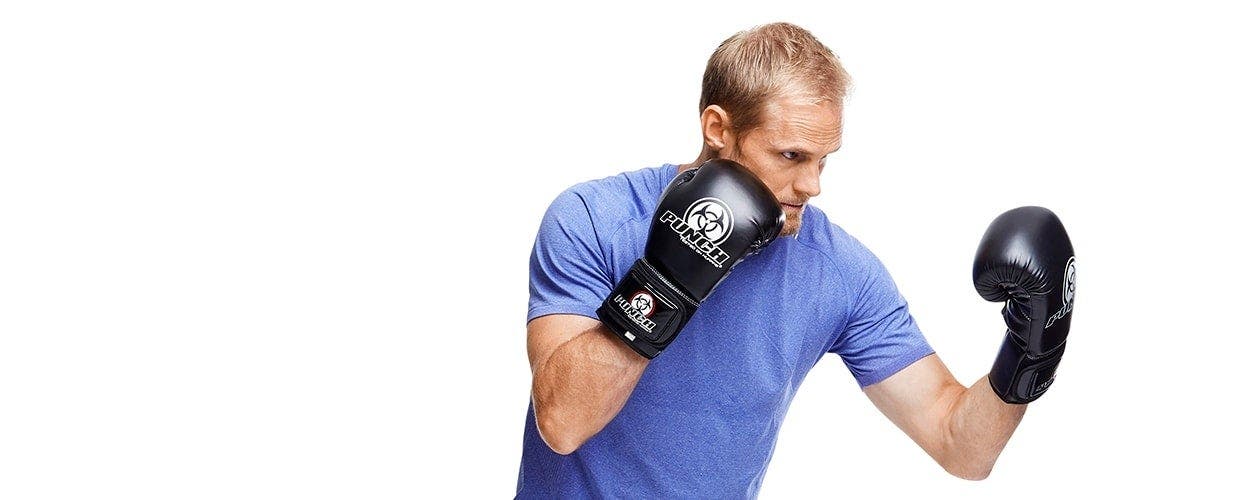

Boxing workout
Boxers are considered some of the leanest and fittest athletes on earth, but you don’t need to set foot in the ring to take advantage of the amazing effects that boxing training can have on your fitness and weight loss.
Boxing not only requires that you constantly contract the muscles in your lower body for movement, drive and power, but it also makes you work the muscles in the core and upper body. So if you’re looking to mix up your routine or take some pressure off your joints, the full body nature of boxing could take your fitness and weight loss to the next level.
To get the best out of your boxing training, it’s crucial to develop the correct stance. Scroll down for the moves and your boxing workout.
The stance
Here’s how to get into position, based on being right-handed – just do the opposite if you’re left-handed.
How-to:
1. Turn shoulders slightly sideways with your left shoulder closest to the intended target. This allows you to develop more power in your right-hand punches.
2. Put your left hand out in front at chin level, with your elbow bent at about 90 degrees, and your right hand lightly touching your right cheek just below your line of sight.
3. Stand with your feet slightly wider than hip-distance apart. Put your left foot forward and right foot back, at about 30-45 degrees.
4. Distribute your weight evenly between the front of both feet and keep knees soft so you can quickly transfer weight from one leg to the other.
5. Point your front toes directly at your intended target and point your back toes at about 2 o’clock.
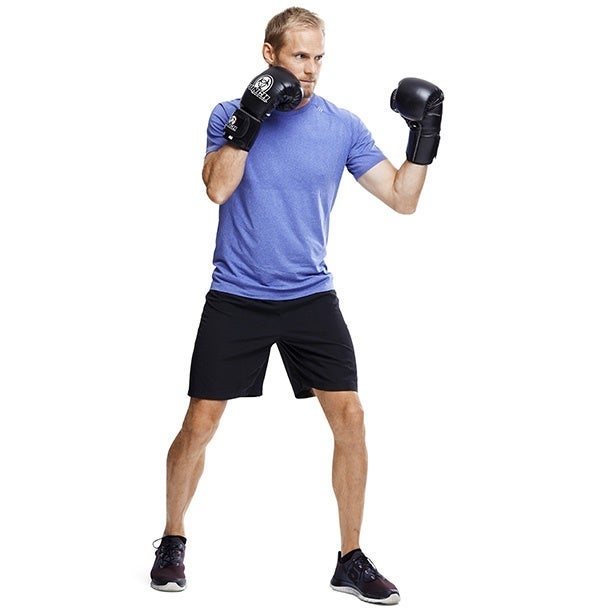
The moves
1. Jabs
Slow boxing is a great way to warm up and perfect your technique. The key is coming back to your stance – your default position – after each punch. For a right jab (shown below), your left foot should be in front in your stance.
How-to:
1. Drive off your right leg and bring your hip through slightly bending your right knee and pivoting your foot.
2. Transfer your weight onto the ball of your left foot as you extend your right arm so that your palm is face down as you do so.
3. Keep it slow and focus on transferring the movement from your lower body to your upper body before quickly returning to your start position (the stance).
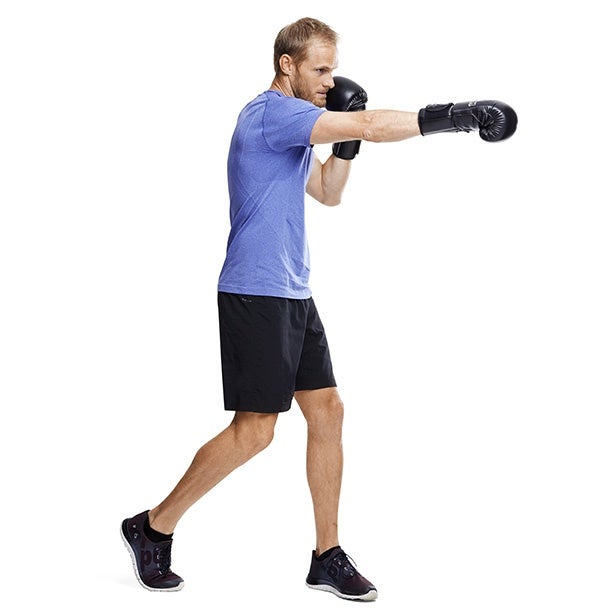
2. Uppercuts
How-to:
1. To do a right uppercut, start in your stance position.
2. Drive up from just below your right chest to in line with your left shoulder in a tight little punch, like you're hitting the rib cage of your imaginary opponent.
3. Keep your right elbow bent, lift your right heel and twist your hip then return to your boxing stance as quickly as possible. 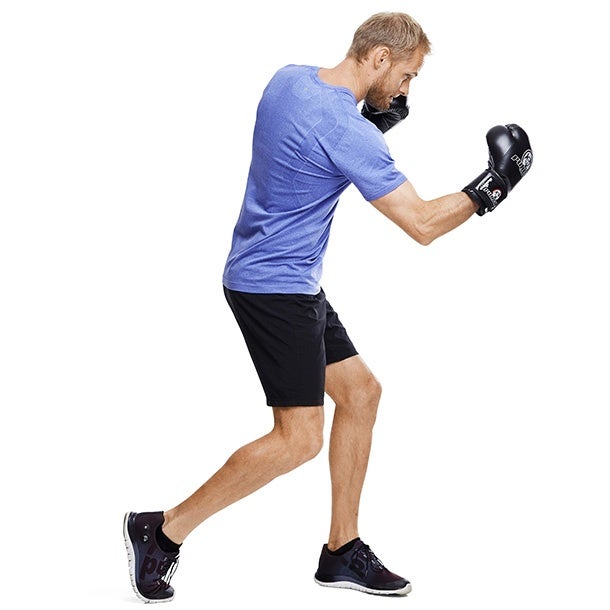
3. Hooks
Like jabs, this movement involves a slight pivot in the foot.
How-to:
1. Keep your elbow bent as it pops out to the side.
2. Your punch hooks across your body in a tight horizontal arc. Imagine you’re trying to clip someone on the chin. Allow your back foot to pivot a little then return to your start position.
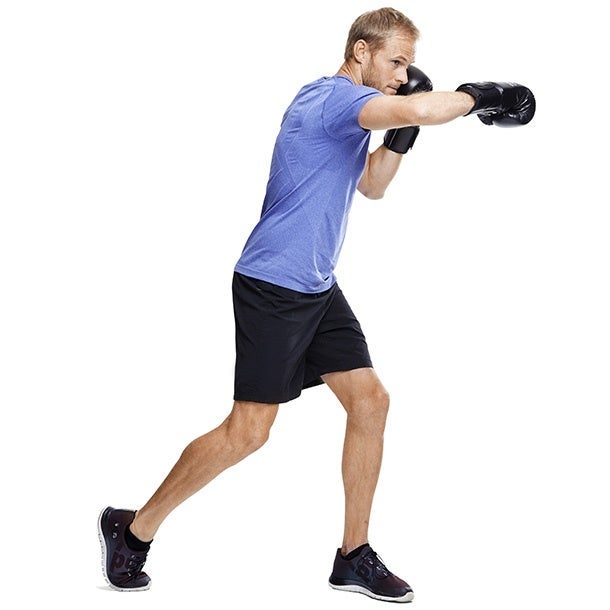
The boxing workout
Once you’ve got a handle on your stance and moves, pop on your trainers and get ready to break into a sweat with our awesome boxing workout. Gloves optional.
1. Plank
How-to:
1. Lie face down on your tummy, rest on your elbows with your forearms flat and your toes curled under.
2. Keeping your back straight and your bottom flat, lift your chest, tummy and legs off the floor. As you breathe out engage your core, drawing your belly button in towards your spine.
3. Keep your breathing regular as you hold the position. If this is too hard, start on your knees.
4. Hold for 40 seconds in either version.
2. Footwork drills
How-to:
1. In your boxing stance, practice shifting your weight from the ball of one foot to the other. Slowly develop this movement into a ‘shadow boxing’ style.
2. Without punching, move from foot to foot in a circle around a fixed point, as if against an opponent.
3. Do this for 1 minute.
3. Arm circles
How-to:
1. Stand with your feet shoulder-width apart and your arms out at shoulder height.
2. Start by making big slow circles with your arms, moving to smaller faster circles.
3. Do 30 seconds forwards, then 30 seconds backwards.
